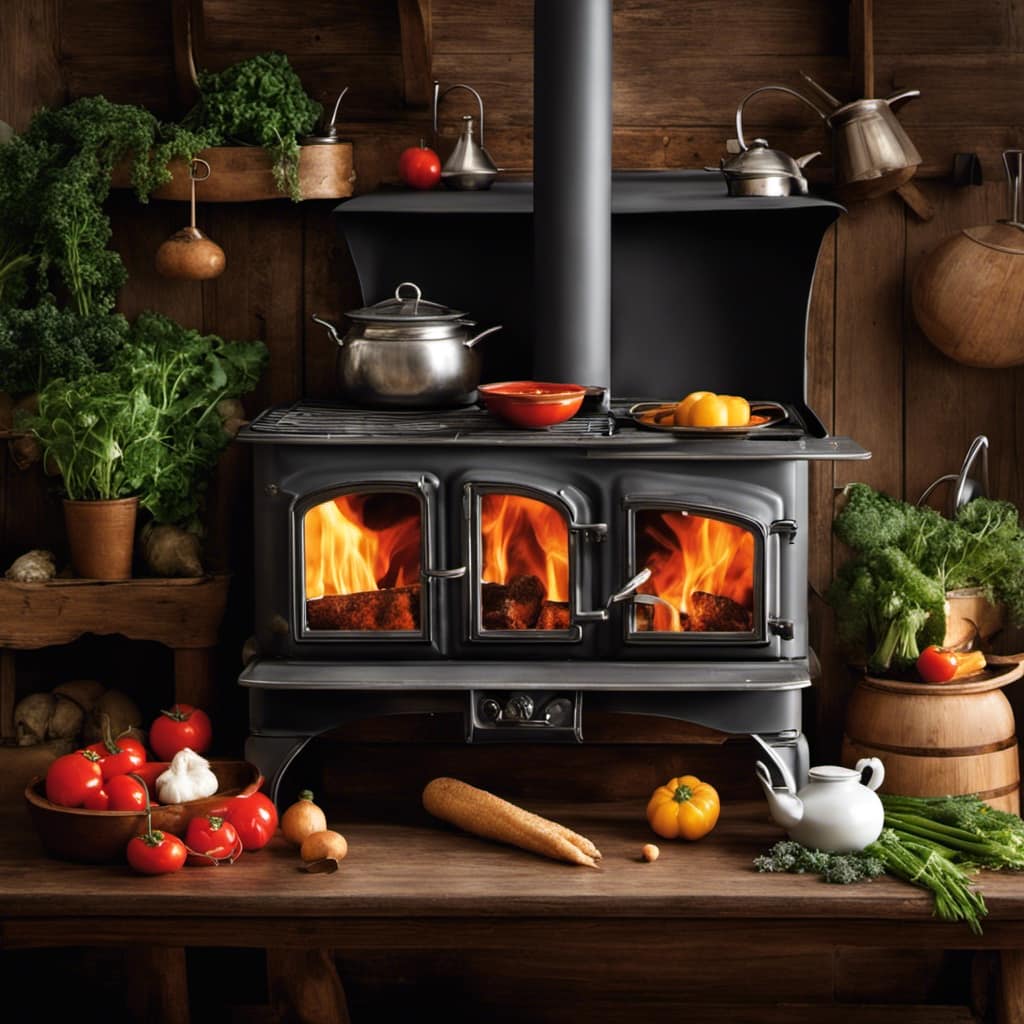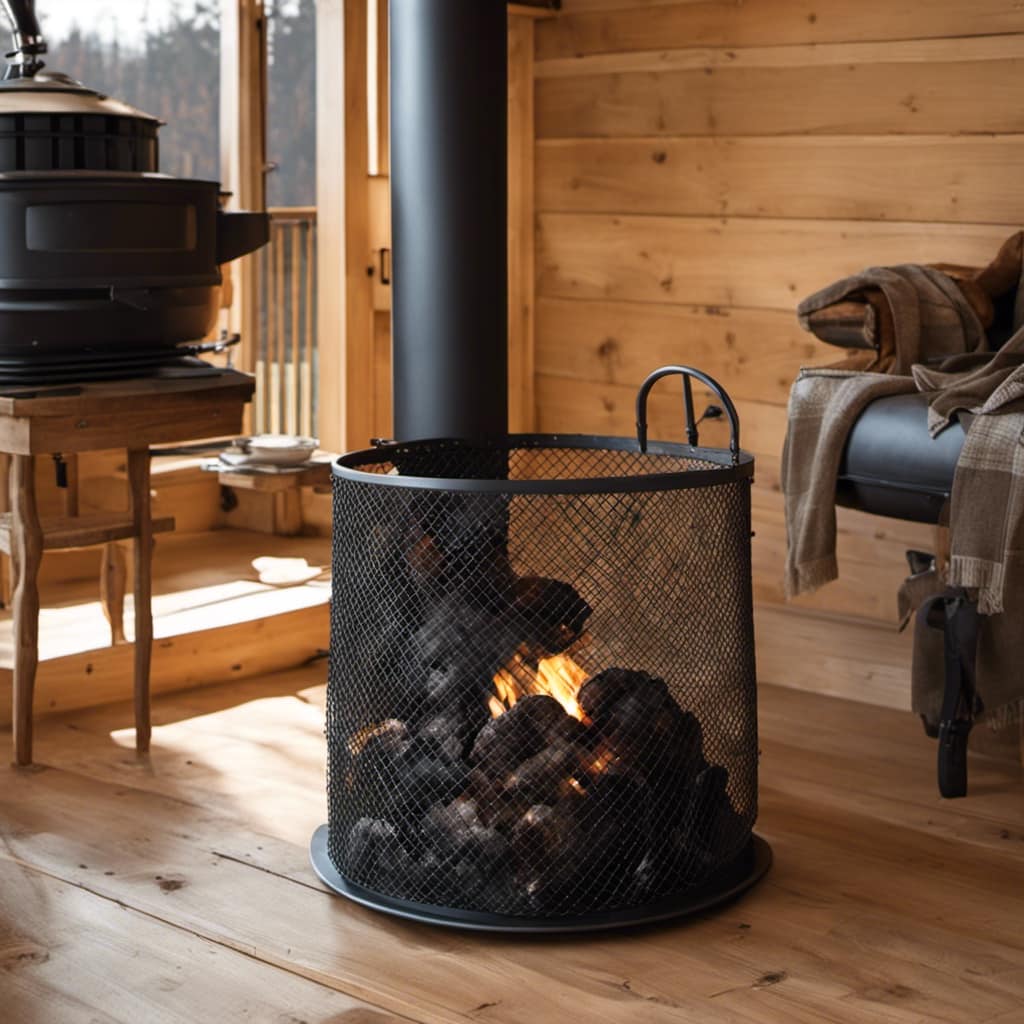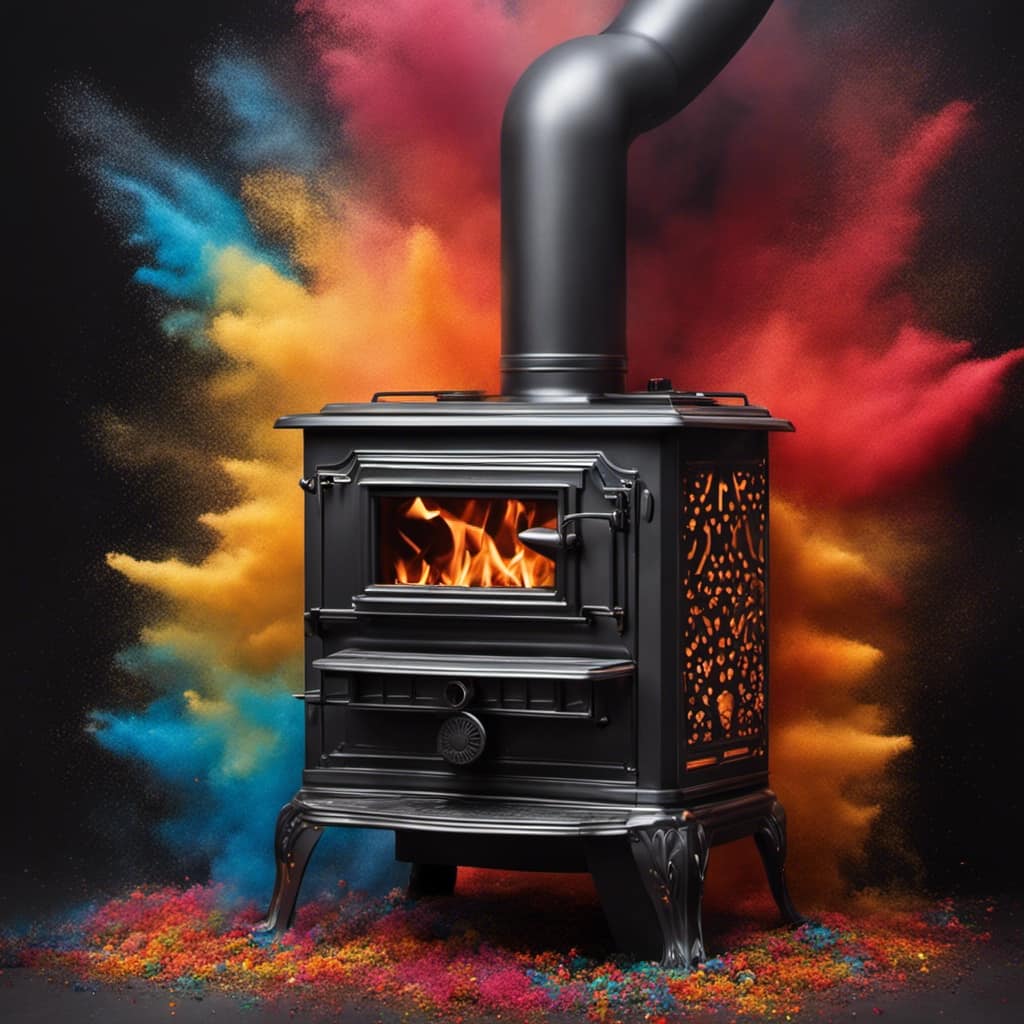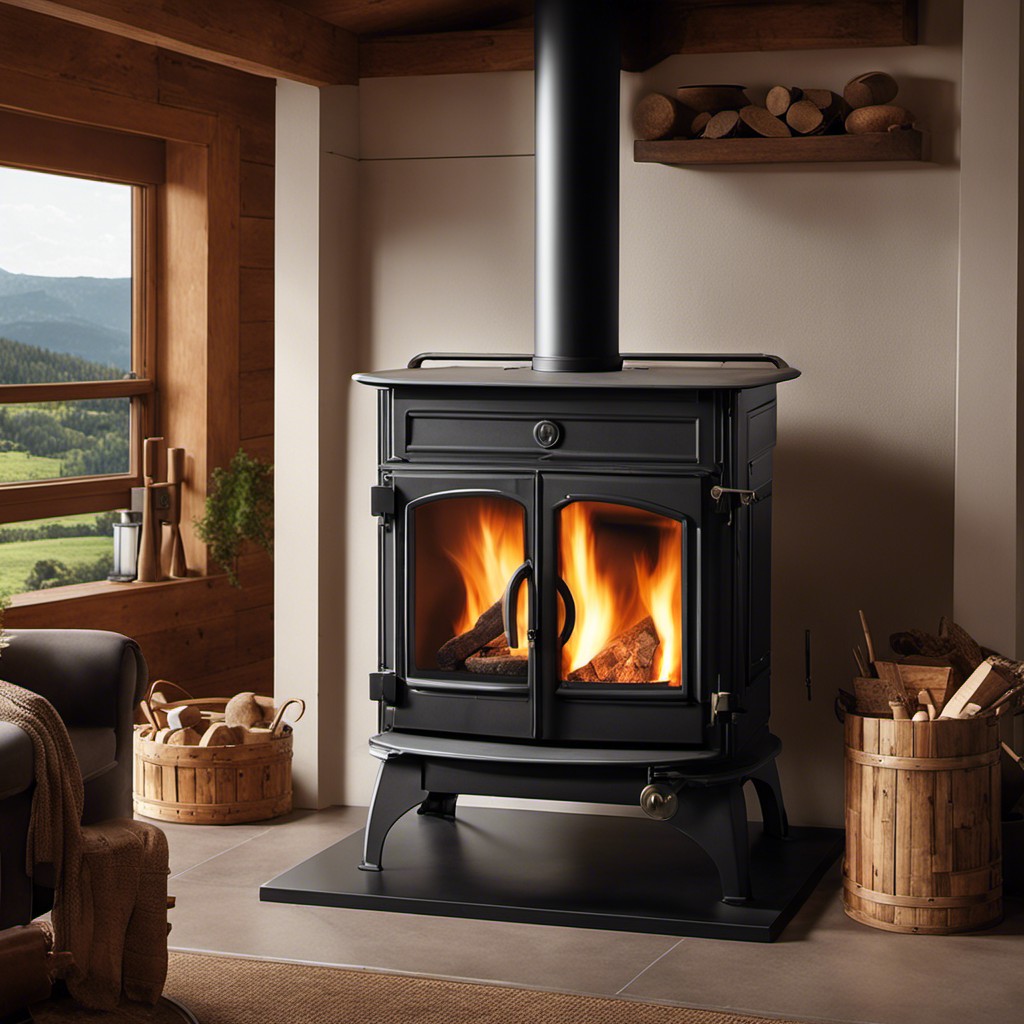
As someone who has a lot of experience with wood stoves, I have learned to value the intricate relationship between fire and fuel.
But the question that lingers in my mind is this: how long should wood last in a wood stove?
In this article, we’ll delve into the factors that affect wood longevity in your trusty stove.
From the type of wood you choose to the moisture content and burning techniques, we’ll explore the secrets to extending your wood stove’s lifespan.

So, grab a cup of tea and let’s dive in.
Key Takeaways
- Moisture content is a significant factor affecting wood longevity in a wood stove.
- Wood density plays a crucial role in determining wood stove heating efficiency.
- Proper seasoning and storage are crucial for reducing moisture content and ensuring optimal burning efficiency.
- Using smaller wood pieces can help extend the lifespan of a wood stove.
Factors Affecting Wood Longevity in Wood Stove
I’ve noticed that moisture content is a significant factor affecting wood longevity in a wood stove. As someone who’s been maintaining wood stoves for years, I can confidently say that keeping the moisture level of the wood in check is crucial for preventing wood rot and ensuring the longevity of the stove.
When wood with high moisture content is burned, it produces less heat and more smoke, leading to inefficient combustion and increased creosote buildup. This not only reduces the stove’s efficiency but also increases the risk of chimney fires.
To maintain optimal wood stove performance, it’s essential to properly season the wood and store it in a dry, well-ventilated area. By taking these preventive measures, one can ensure that the wood lasts longer and the wood stove operates at its best.

Speaking of wood stove efficiency, another important aspect to consider is the type of wood used.
The Importance of Wood Type in Wood Stove Efficiency
I can attest that using the right type of wood and ensuring its proper seasoning and storage are vital for maximizing the efficiency of a wood stove.
When it comes to wood stoves, the wood density plays a crucial role in determining its heating efficiency. Wood with higher density, such as oak or hickory, contains more energy per unit volume, leading to a longer burn time and increased heat output. On the other hand, softer woods like pine or spruce have lower density and burn faster, resulting in shorter burn times and lower heat output.
Therefore, it’s essential to choose hardwoods with high wood density for optimal heating efficiency in a wood stove.

Additionally, proper seasoning and storage of the wood are equally important to ensure that it burns efficiently, producing more heat and less smoke.
Understanding Moisture Content and Its Impact on Wood Burning
The moisture content of the wood significantly affects its burning efficiency and heat output. Proper seasoning and storage are crucial factors to consider when it comes to wood burning.
Wood that hasn’t been properly seasoned, or dried, contains a higher moisture content, which can lead to several issues. Firstly, wet wood requires more energy to burn, resulting in reduced heat output. This means that you’ll need to burn more wood to achieve the desired warmth.
Additionally, the excess moisture in the wood can result in more smoke and pollutants being released into the air, leading to poor air quality. To ensure optimal burning efficiency and heat output, it’s essential to store wood in a well-ventilated area for proper seasoning.

This allows the wood to dry out, reducing its moisture content and ensuring a more efficient burn.
Best Burning Techniques for Extending Wood Stove Lifespan
Although it may seem counterintuitive, using smaller wood pieces can actually help extend the lifespan of your wood stove. When it comes to burning techniques, maximizing efficiency is key.
By using smaller wood pieces, you can achieve a hotter and more controlled burn, which can reduce the strain on your wood stove and ultimately increase its lifespan. Smaller wood pieces burn more quickly and evenly, allowing for better airflow and combustion. This not only maximizes the heat output but also minimizes the amount of unburned wood and ash buildup.
Additionally, smaller wood pieces tend to have lower moisture content, which further enhances their burning efficiency. So, don’t be afraid to break down larger logs into smaller pieces for a longer-lasting and more efficient wood stove experience.

Signs It’s Time to Replace Your Wood in the Stove
Fortunately, if you notice excessive smoke or a lack of heat production, it’s probably time to replace the wood in your stove.
As an experienced wood stove user, I can confidently say that the quality of wood and the way it’s stored can greatly affect its lifespan and performance. Here are some key factors to consider:
- Wood quality: Using high-quality hardwood, such as oak or maple, ensures better combustion and longer burning times.
- Moisture content: Properly seasoned wood with a moisture content of around 20% burns more efficiently and produces less smoke.
- Size of the wood: Opt for wood that’s cut into smaller, uniform pieces to promote better airflow and combustion.
- Storage methods: Storing wood in a dry, well-ventilated area, preferably off the ground, prevents moisture absorption and decay.
- Regular inspections: Check your wood supply regularly for signs of decay, mold, or insect infestation, as these can affect its performance.
Frequently Asked Questions
How Often Should I Clean My Wood Stove to Maintain Its Efficiency?
I clean my wood stove regularly to maintain its efficiency. It’s important to properly season firewood and look for signs that indicate it’s time to clean, such as reduced heat output or excessive smoke.
Can I Burn Treated or Painted Wood in a Wood Stove?
I wouldn’t recommend burning treated or painted wood in a wood stove. It can release harmful chemicals into the air and pose a safety risk. Stick to burning firewood that is dry and untreated for optimal wood stove safety.

What Are the Potential Health Risks Associated With Burning Wood in a Stove?
Potential health risks associated with burning wood in a stove include air pollution and the release of harmful chemicals. It is important to use properly seasoned wood and maintain proper ventilation to reduce these risks.
How Can I Prevent Creosote Buildup in My Wood Stove?
To prevent creosote buildup in my wood stove, I follow best practices for wood stove maintenance. This includes regular cleaning of the chimney and flue, using dry and properly seasoned wood, and ensuring proper airflow for efficient combustion.
Are There Any Environmental Concerns Related to Using a Wood Stove for Heating?
Using a wood stove for heating can have environmental concerns. It’s important to consider the sustainability of using wood as a fuel source. Properly seasoned wood and efficient burning can help minimize the impact.
Conclusion
In the realm of wood stoves, the lifespan of wood is a delicate dance between factors such as wood type, moisture content, and burning techniques. Like a symphony, these elements must harmonize to ensure the longevity of your wood stove.

By understanding the intricacies of wood burning and recognizing the signs of wear and tear, you can keep your wood stove roaring with warmth for years to come.
Remember, the key to a lasting wood stove experience lies in the art of mastering the fire.
Growing up surrounded by the vast beauty of nature, Sierra was always drawn to the call of the wild. While others sought the comfort of the familiar, she ventured out, embracing the unpredictable and finding stories in the heartbeat of nature.
At the epicenter of every remarkable venture lies a dynamic team—a fusion of diverse talents, visions, and passions. The essence of Best Small Wood Stoves is crafted and refined by such a trio: Sierra, Logan, and Terra. Their collective expertise has transformed the platform into a leading authority on small wood stoves, radiating warmth and knowledge in equal measure.











